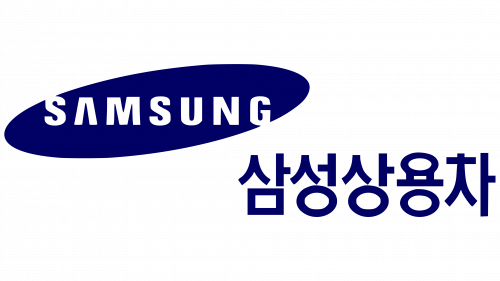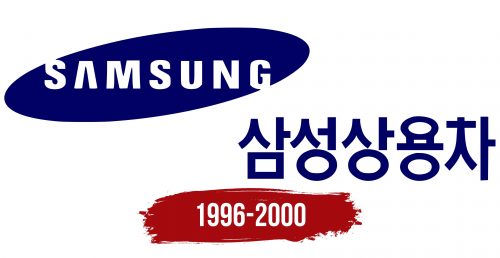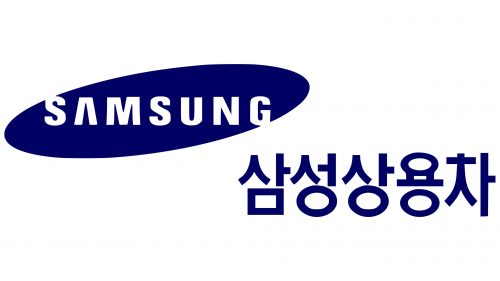 Samsung Commercial Vehicles Logo PNG
Samsung Commercial Vehicles Logo PNG
The Samsung Commercial Vehicles logo exemplifies an effective combination of graphic and text elements. It conveys the company’s core values, including a commitment to advanced technology and adherence to high standards in commercial vehicle manufacturing.
Samsung Commercial Vehicles: Brand overview
One of the biggest companies in South Korea, Samsung Group, chose to enter the automobile business in 1994, marking the beginning of Samsung Commercial Vehicles’ existence. This choice was a component of Samsung’s business diversification plan and its goal to dominate all important industries globally.
Having previously gained experience in the production of ships and heavy machinery, Samsung Heavy Industries founded the new company. The main objective was manufacturing commercial vehicles, such as buses and trucks.
In 1995, the company started building its first vehicle manufacturing plant in Daegu, South Korea. Designed using the most recent automotive manufacturing technologies, this plant had the capacity to produce up to 200,000 cars annually.
Concurrent with the factory’s establishment, Samsung engaged in negotiations for technology collaboration with many global automakers. Consequently, a technology transfer deal was established with Nissan Diesel, currently part of the Volvo Group, to produce trucks and buses.
The company debuted the SV110, its first truck, in 1997. This medium-duty truck was created using Nissan Diesel technology. The SV110’s dependability and effectiveness won its favor in the South Korean market.
A significant milestone was achieved in 1998 when the first bus was introduced. This city bus was also created utilizing technologies from Nissan Diesel. Positive comments were made about the bus’s comfort and fuel efficiency.
However, despite these early triumphs, significant challenges were encountered during the Asian financial crisis of 1997–1998. The crisis significantly negatively affected the South Korean economy, decreasing demand for commercial vehicles.
The company was sold in 1999 due to the financial crisis and the reorganization of the Samsung Group. In 2000, following protracted negotiations, the Renault Group acquired it.
The previous company was merged into Renault Samsung Motors, which Renault now manages. Renault decided to concentrate on producing passenger cars at the Busan facility, and as a result, the production of trucks and buses was progressively discontinued.
Despite having a brief independent existence, the company significantly contributed to developing the South Korean auto sector. The business exemplified the goals of the Samsung Group in the automobile industry and advanced South Korea’s commercial vehicle production technologies.
It’s crucial to remember that Samsung Group did not completely lose its experience in the automotive sector through this venture. It was used partly to establish and grow Renault Samsung Motors, which is still doing well in the global and South Korean markets.
Even though the company is no longer a distinct entity, its brief existence is nevertheless worth studying as a fascinating chapter in the evolution of the South Korean auto sector. It serves as an example of the difficulties even big, prosperous companies face when breaking into brand-new, fiercely competitive sectors, particularly in times of international economic downturn.
International cooperation and knowledge transfer can significantly aid the development of the automotive sector in emerging markets, as demonstrated by this history. Despite its brief existence, the company advanced South Korea’s manufacturing capabilities and automotive technologies.
Meaning and History
What is Samsung Commercial Vehicles?
It is a division of South Korean multinational conglomerate Samsung Group, which has been engaged in the production and sale of commercial vehicles. The company offered a range of trucks, buses, and vans and utilized the group’s extensive expertise in technology, manufacturing, and global distribution to produce high-quality, efficient, and reliable vehicles.
1996 – 2000
The Samsung Commercial Vehicles logo consists of two parts that complement each other harmoniously. One part includes the recognizable Samsung conglomerate symbol – a white inscription placed within a blue oval. The elongated shape of the geometric figure symbolizes global reach, and its diagonal positioning evokes a sense of movement and progress. The brand name, unlike the oval, is aligned horizontally. This imbalance in form makes the emblem noticeable and memorable.
The inscription uses a clear font with straight lines associated with precision and reliability. Uppercase letters emphasize the significance and authority of the heavy machinery manufacturer. The “A” lacks a crossbar, indicating the company’s pursuit of innovation and unique engineering solutions. Notably, the “S” and “G” touch the edges of the oval, blending with the surrounding white space, symbolizing the brand’s close connection with the international community.
The second part of the logo features the name Samsung Commercial Vehicles in Korean. The inscription is rendered in a traditional font with clear and straight lines, reflecting the company’s cultural heritage. The arrangement and proportions of the characters create a visually balanced image. Designers duplicated the brand name in two languages to reflect its global presence.
- The English inscription helps the manufacturer of construction machines, buses, and trucks connect with an international audience, fostering trust among foreign clients.
- The characters emphasize the South Korean company’s cultural heritage, strengthen its national identity, and help maintain ties with the domestic market.
Bilingualism makes the Samsung Commercial Vehicles logo more versatile and suitable for different cultural contexts. To ensure the two distinct inscriptions blend well, designers used a common color scheme: a combination of white and blue. White gives the company name a clean and professional appearance, while blue evokes associations with reliability and technological advancement.




